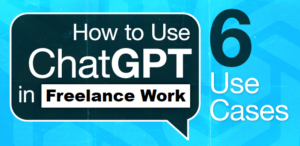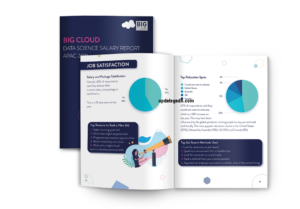Introduction:(8 Ways AI is Used in Education)
The promise of employing artificial intelligence in education to improve learning, support teachers, and generate more effective individualized learning is both thrilling and intimidating. To even have an educated discourse about AI in education, one must first get beyond science-fiction scenarios in which computers and robots teach our children, replace instructors, and remove the human aspect from what is basically a human activity.
Table of Contents
- A brief explanation of AI’s growing role in various industries, including education.
- Highlight the potential benefits of integrating AI into the education sector.
- Set the tone for discussing the different ways AI is used in education.

1. Personalized Learning Paths
- Starting Sentence: “AI-powered personalized learning is transforming education by tailoring learning experiences to individual students.”
- Explanation of how AI analyzes students’ strengths, weaknesses, and learning styles to create customized learning paths.
- Examples of platforms and tools that offer personalized learning experiences through AI.
2. Intelligent Tutoring Systems
- Starting Sentence: “Intelligent tutoring systems have brought a new dimension to one-on-one learning, thanks to AI’s capabilities.”
- Explanation of how AI tutors provide real-time assistance and feedback to students, simulating the experience of a human tutor.
- It is highlighting the advantages of AI tutors, such as 24/7 availability and adaptability to different paces.
3. Automated Grading and Feedback
- Starting Sentence: “The tedious task of grading assignments is being streamlined through AI, allowing educators to focus on more impactful aspects of teaching.”
- Discussion on how AI automates grading for multiple-choice, short-answer, and even essay-based assignments.
- Emphasis on the potential for timely and consistent feedback to improve student learning.
4. Enhancing Classroom Engagement
- Starting Sentence: “AI-powered tools are captivating students’ attention in the classroom through interactive and immersive experiences.”
- Exploration of how AI technologies like virtual reality (VR) and augmented reality (AR) create engaging and interactive learning environments.
- Examples of how AI-driven content can make complex topics more accessible and enjoyable.

5. Early Detection of Learning Difficulties
- Starting Sentence: “AI is playing a crucial role in identifying learning difficulties at an early stage, enabling timely interventions.”
- Explanation of how AI analyzes student performance data to detect patterns that may indicate learning challenges.
- Case studies illustrating how early detection can lead to effective support and improved outcomes.
6. Adaptive Content Creation
- Starting Sentence: “AI’s content creation abilities are reshaping the way educational materials are developed and customized.”
- Discuss how AI generates educational content, from textbooks to online modules, based on curriculum requirements.
- Mention of AI’s potential to keep content updated and aligned with evolving educational standards.
7. Data-Driven Insights for Educators
- Starting Sentence: “Educators are harnessing AI’s data analysis capabilities to gain valuable insights into student progress and teaching methods.”
- Explanation of how AI processes large amounts of data to provide actionable insights to teachers and administrators.
- Examples of how these insights help in making informed decisions for curriculum design and instructional strategies.

8. Language Translation and Inclusive Education
- Starting Sentence: “AI-powered language translation is breaking down language barriers and promoting inclusivity in education.”
- Discussion on how AI translation tools facilitate learning for non-native English speakers and students in multilingual environments.
- Mention of AI’s potential to make educational resources accessible to differently-abled students through text-to-speech and speech-to-text technologies.
[Inclusion and Universal Access] Using AI in Education
According to Bernard Marr, AI tools can improve inclusion and universal access to education in a variety of ways, including:
Assisting in the “accessibility of global classrooms to all, including those who speak different languages or who may have visual or hearing impairments”
Providing access for “students who might not be able to attend school due to illness”
Better serving “students who require learning at a different level or on a particular subject that isn’t available in their own school”
Overall, it is intended that AI will eventually assist educators in making continuing progress in addressing the wide range of physical, cognitive, academic, social, and emotional aspects that might effect student learning, as well as ensuring that all students have equal opportunity.
Conclusion: Embracing AI for a Brighter Educational Future (8 Ways AI is Used in Education)
- Summarize the diverse ways AI is being utilized in education.
- Reinforce the idea that AI is a valuable tool that can complement and enhance traditional teaching methods.
- Encourage continued exploration and integration of AI to unlock its full potential in transforming education.
Read more ;-https://updategadh.com/chatcpt/how-to-use-chatgpt/



